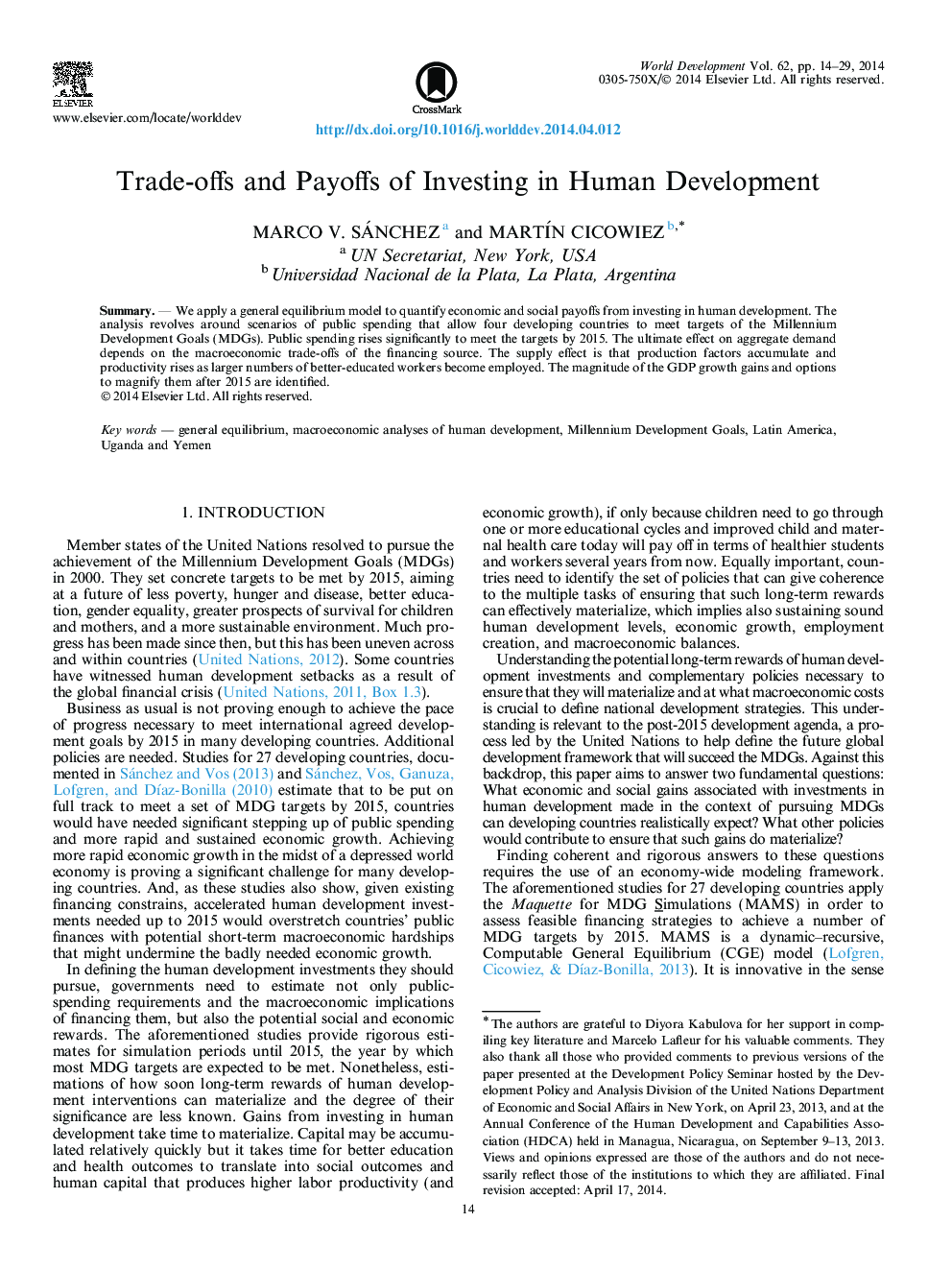| Article ID | Journal | Published Year | Pages | File Type |
|---|---|---|---|---|
| 991373 | World Development | 2014 | 16 Pages |
•We apply a general equilibrium model to quantify payoffs from investing in human development.•Scenarios show that public spending needs to rise to meet targets of the MDGs by 2015.•Public spending boosts aggregate demand depending on the source of financing.•Production factors accumulate and productivity rises.•There are GDP growth gains as a result of investing in human development.
SummaryWe apply a general equilibrium model to quantify economic and social payoffs from investing in human development. The analysis revolves around scenarios of public spending that allow four developing countries to meet targets of the Millennium Development Goals (MDGs). Public spending rises significantly to meet the targets by 2015. The ultimate effect on aggregate demand depends on the macroeconomic trade-offs of the financing source. The supply effect is that production factors accumulate and productivity rises as larger numbers of better-educated workers become employed. The magnitude of the GDP growth gains and options to magnify them after 2015 are identified.
